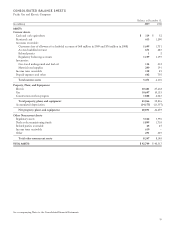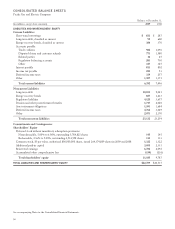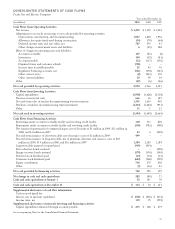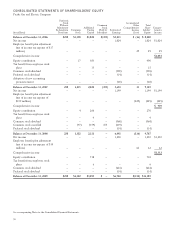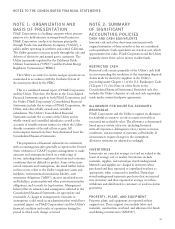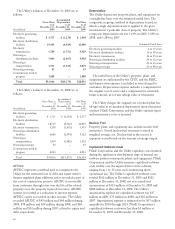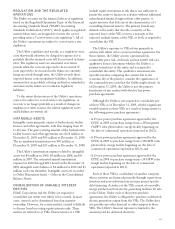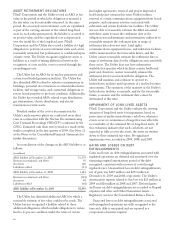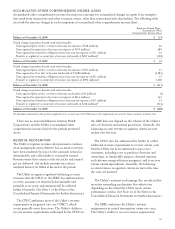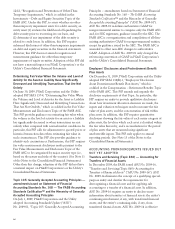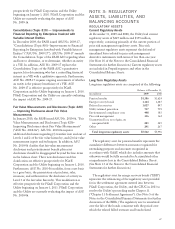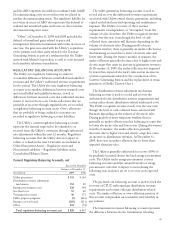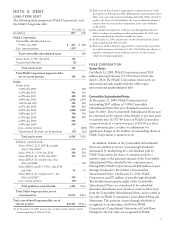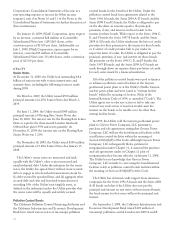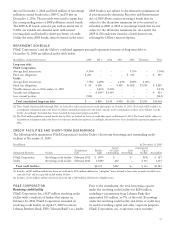PG&E 2009 Annual Report Download - page 69
Download and view the complete annual report
Please find page 69 of the 2009 PG&E annual report below. You can navigate through the pages in the report by either clicking on the pages listed below, or by using the keyword search tool below to find specific information within the annual report.market participants would use in pricing the assets or
liabilities. Fair value is defined as the price that would be
received to sell an asset or paid to transfer a liability in an
orderly transaction between market participants at the
measurement date, or the “exit price.” PG&E Corporation
and the Utility utilize a fair value hierarchy that prioritizes
the inputs to valuation techniques used to measure fair
value and give precedence to observable inputs in
determining fair value. An instrument’s level within the
hierarchy is based on the lowest level of any significant
input to the fair value measurement. The hierarchy gives
the highest priority to unadjusted quoted prices in active
markets for identical assets or liabilities (Level 1
measurements) and the lowest priority to unobservable
inputs (Level 3 measurements). Assets and liabilities are
classified based on the lowest level of input that is
significant to the fair value measurement. (See Note 11 of
the Notes to the Consolidated Financial Statements for
further discussion.)
FAIR VALUE OPTION
PG&E Corporation and the Utility have not elected the fair
value option for any assets or liabilities during the years
ended December 31, 2009 and 2008.
ADOPTION OF NEW ACCOUNTING
PRONOUNCEMENTS
Disclosures about Derivative Instruments and Hedging
Activities — an amendment of FASB Statement No. 133
On January 1, 2009, PG&E Corporation and the Utility
adopted Statement of Financial Accounting Standards
(“SFAS”) No. 161, “Disclosures about Derivative
Instruments and Hedging Activities — an amendment of
FASB Statement No. 133” (“SFAS No. 161”), which is
codified in the Derivatives and Hedging Topic of the FASB
ASC. SFAS No. 161 requires an entity to provide
qualitative disclosures about its objectives and strategies for
using derivative instruments and quantitative disclosures
that detail the fair value amounts of, and gains and losses
on, derivative instruments. SFAS No. 161 also requires
disclosures about credit risk-related contingent features of
derivative instruments. (See Note 10 of the Notes to the
Consolidated Financial Statements.)
Noncontrolling Interests in Consolidated Financial
Statements — an amendment of ARB No. 51
On January 1, 2009, PG&E Corporation and the Utility
adopted SFAS No. 160, “Noncontrolling Interests in
Consolidated Financial Statements — an amendment of
Accounting Research Bulletin No. 51” (“SFAS No. 160”),
which is codified in the Consolidation Topic of the FASB
ASC. SFAS No. 160 establishes accounting and reporting
standards for a noncontrolling interest in a subsidiary and
for the deconsolidation of a subsidiary. SFAS No. 160
defines a “noncontrolling interest,” previously called a
“minority interest,” as the portion of equity in a subsidiary
not attributable, directly or indirectly, to a parent. Among
other items, SFAS No. 160 requires that an entity
(1) include a noncontrolling interest in its consolidated
statement of financial position within equity separate from
the parent’s equity, (2) report amounts inclusive of both
the parent’s and noncontrolling interest’s shares in
consolidated net income, and (3) separately report the
amounts of consolidated net income attributable to the
parent and noncontrolling interest on the consolidated
statement of operations. If a subsidiary is deconsolidated,
any retained noncontrolling equity investment in the
former subsidiary must be measured at fair value, and a
gain or loss must be recognized in net income based on
such fair value.
PG&E Corporation has reclassified its noncontrolling
interest in the Utility from Preferred Stock of Subsidiaries
to equity in PG&E Corporation’s Consolidated Financial
Statements in accordance with SFAS No. 160 for all
periods presented. The Utility had no material
noncontrolling interests in consolidated subsidiaries as of
December 31, 2009 and December 31, 2008.
PG&E Corporation and the Utility applied the
presentation and disclosure requirements of SFAS No. 160
retrospectively. Other than the change in presentation of
noncontrolling interests, adoption of SFAS No. 160 did
not have a material impact on PG&E Corporation’s or the
Utility’s Consolidated Financial Statements.
Subsequent Events
On June 30, 2009, PG&E Corporation and the Utility
adopted SFAS No. 165, “Subsequent Events” (“SFAS
No. 165”), which is codified in the Subsequent Events
Topic of the FASB ASC. SFAS No. 165 does not
significantly change the prior accounting practice for
subsequent events, except for the requirement to disclose
the date through which an entity has evaluated subsequent
events and the basis for that date. PG&E Corporation and
the Utility have evaluated material subsequent events
through February 19, 2010, the issue date of PG&E
Corporation’s and the Utility’s Consolidated Financial
Statements. Other than this disclosure, adoption of SFAS
No. 165 did not have a material impact on PG&E
Corporation’s or the Utility’s Consolidated Financial
Statements.
Recognition and Presentation of Other-Than-Temporary
Impairments
On June 30, 2009, PG&E Corporation and the Utility
adopted FASB Staff Position (“FSP”) SFAS 115-2 and SFAS
65


